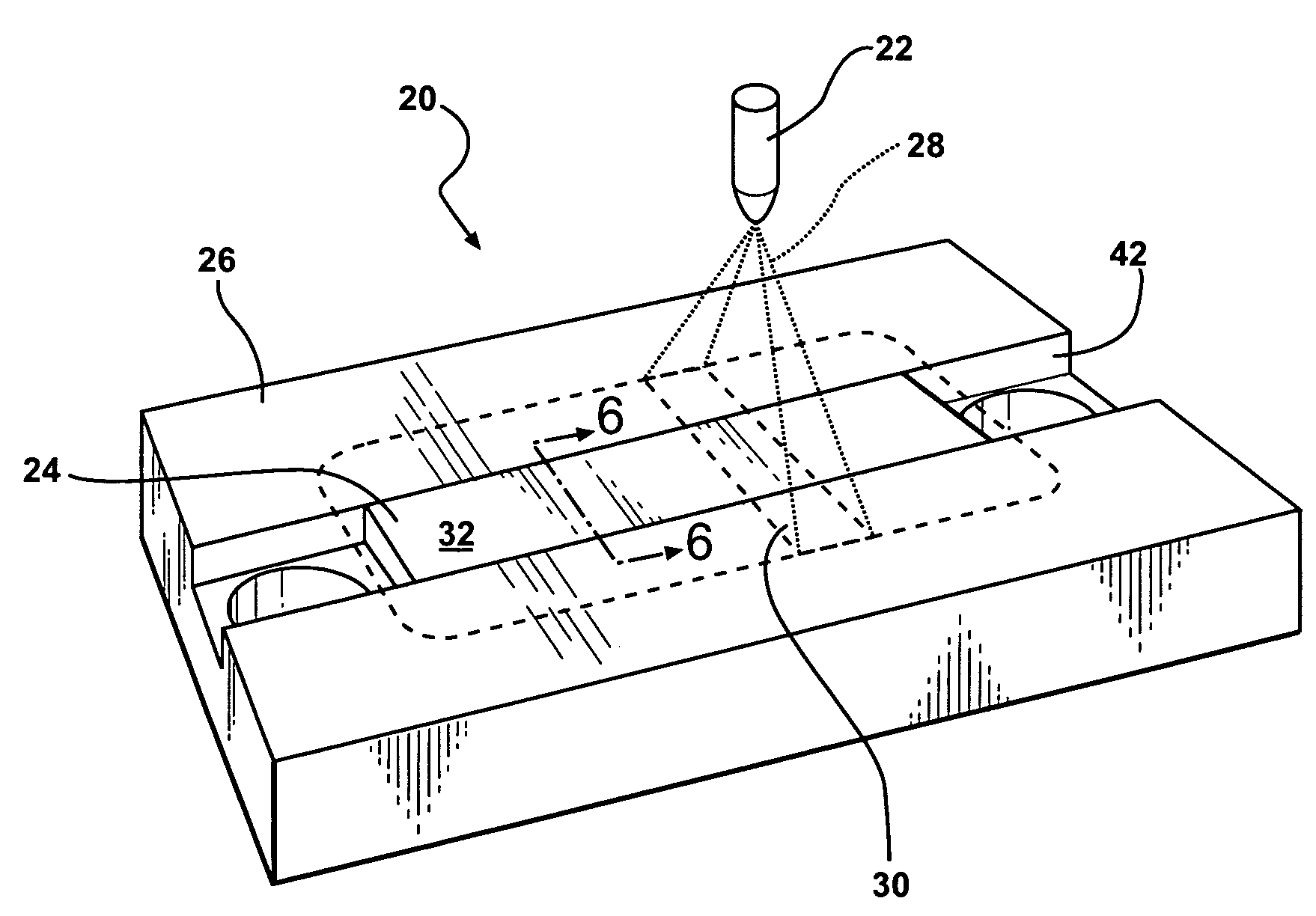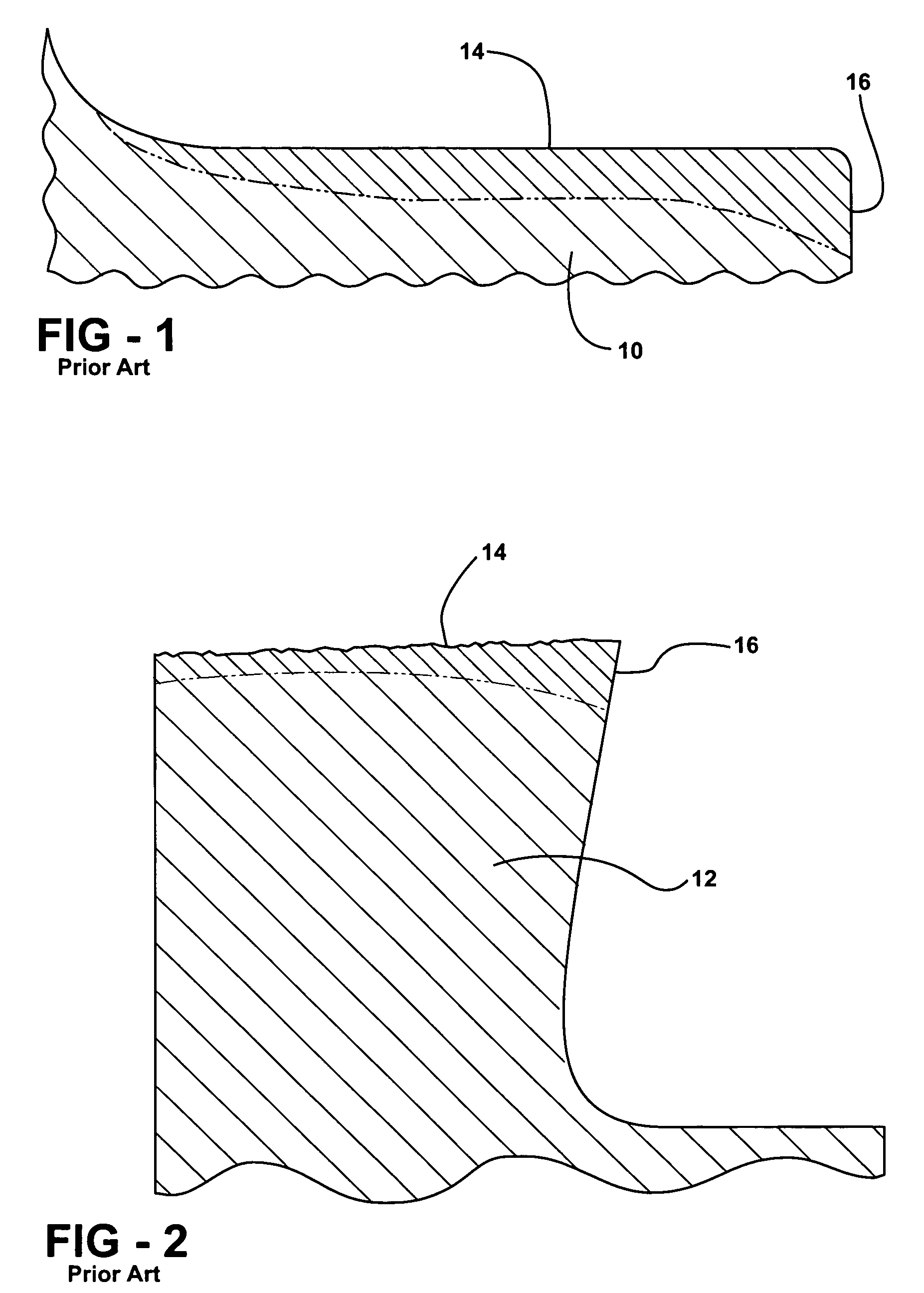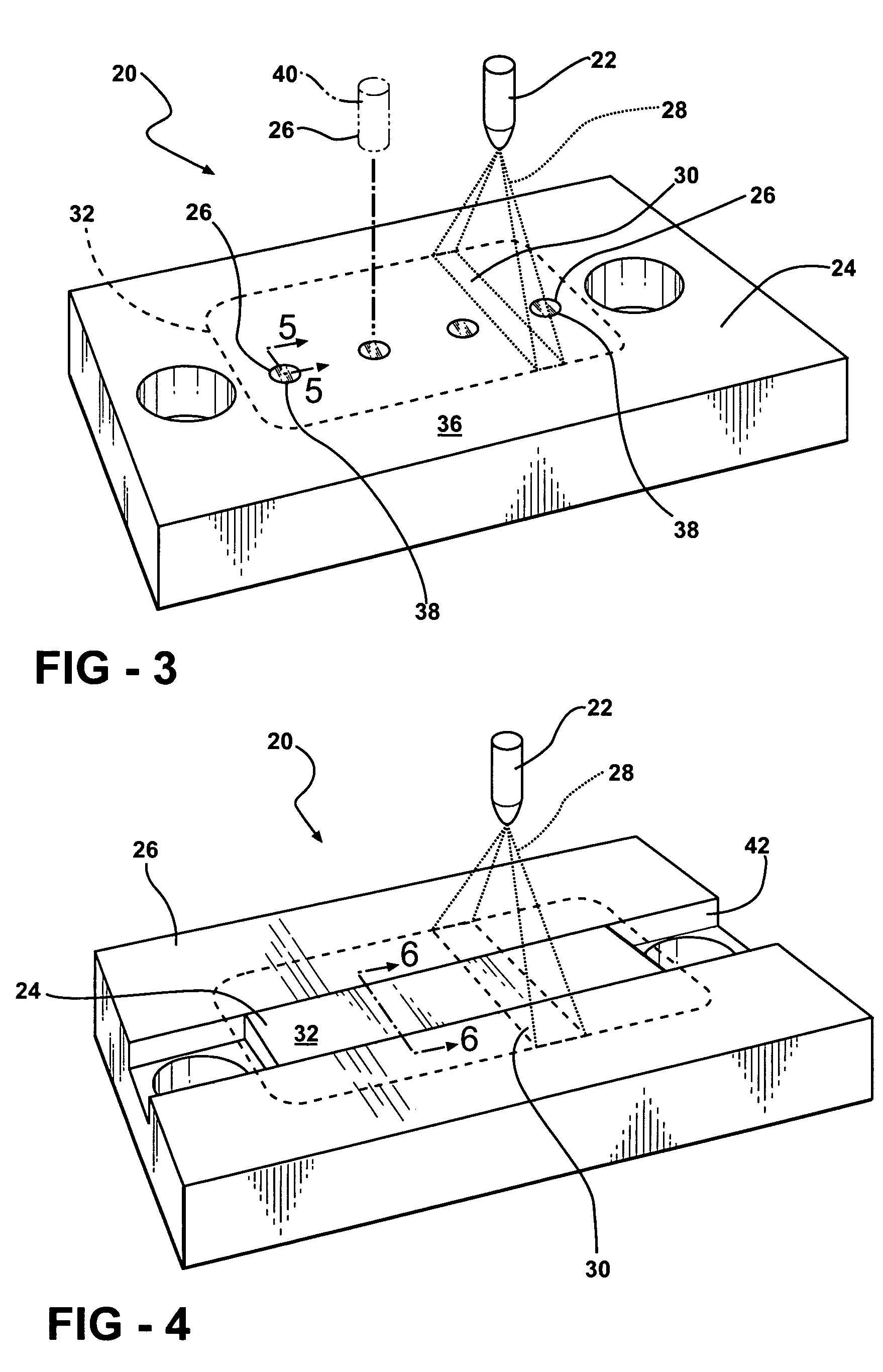Heat treating assembly and method
a technology of heat treatment and assembly, applied in the direction of metal-working equipment, welding equipment, manufacturing tools, etc., can solve the problems of reducing precisely altering the defined area, and limiting the alteration of the substrate, so as to overcome the inadequacies, reduce the likelihood of substrate failure, and limit the effect of substrate alteration
- Summary
- Abstract
- Description
- Claims
- Application Information
AI Technical Summary
Benefits of technology
Problems solved by technology
Method used
Image
Examples
Embodiment Construction
[0018]A heat treating assembly is illustrated generally at 20 in FIG. 3. The heat treating assembly 20 comprises a laser 22, a substrate 24, and a tool 26. The laser 22 emits laser energy 28 directed toward the substrate 24 and the tool 26. The substrate 24 absorbs the laser energy 28 and heat energy alters the substrate 24. The substrate may be altered in various ways, such as, but not limited to, etching, marking, annealing, precipitation hardening, and the like.
[0019]Various lasers 22 emit laser energy 28 having various wavelengths depending upon the type of laser. The laser 22 may be a solid state laser, a gas laser, an excimer laser, a dye laser, or a semiconductor laser. Illustrative examples of solid state lasers include, but are not limited to, ruby-type lasers and neodymium:yttrium-aluminum garnet-type (Nd:YAG) lasers. The Nd:YAG lasers typically produce the laser energy 28 having a wavelength of about 1,064 nanometers. Illustrative examples of the gas lasers include, but a...
PUM
| Property | Measurement | Unit |
|---|---|---|
| reflectivity | aaaaa | aaaaa |
| thermal conductivity | aaaaa | aaaaa |
| wavelength | aaaaa | aaaaa |
Abstract
Description
Claims
Application Information
 Login to View More
Login to View More - R&D
- Intellectual Property
- Life Sciences
- Materials
- Tech Scout
- Unparalleled Data Quality
- Higher Quality Content
- 60% Fewer Hallucinations
Browse by: Latest US Patents, China's latest patents, Technical Efficacy Thesaurus, Application Domain, Technology Topic, Popular Technical Reports.
© 2025 PatSnap. All rights reserved.Legal|Privacy policy|Modern Slavery Act Transparency Statement|Sitemap|About US| Contact US: help@patsnap.com



